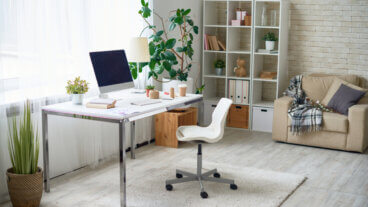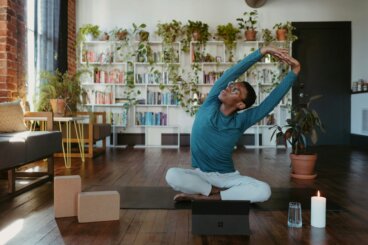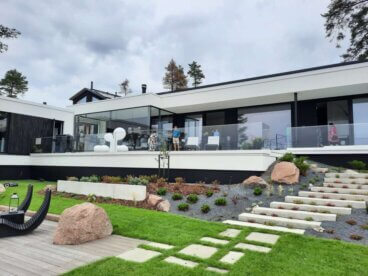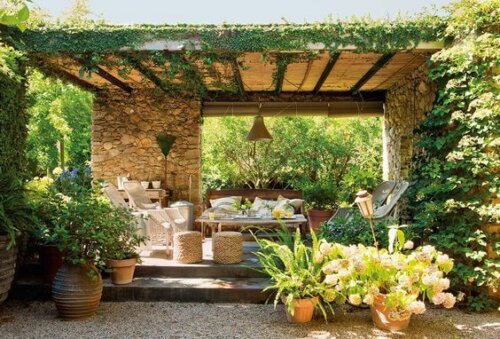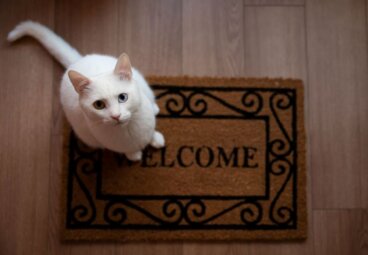How to Create Discourse in Interior Design

When you decorate a home, you try to establish a coherent organization and distribution. To achieve this purpose, it’s essential that you keep in mind how to create discourse in interior design.
If you take a look at each of the rooms, you’ll probably realize that the furniture, colors, and objects have common parameters in such a way that a specific meaning is obtained.
From our perspective, we try to apply a process of coherence and stability. When everything’s in harmony, we perceive full well-being. In this regard, a discourse is achieved in which all the resources are related to one another and dialogue in a sustainable way.
How to create discourse in the living room
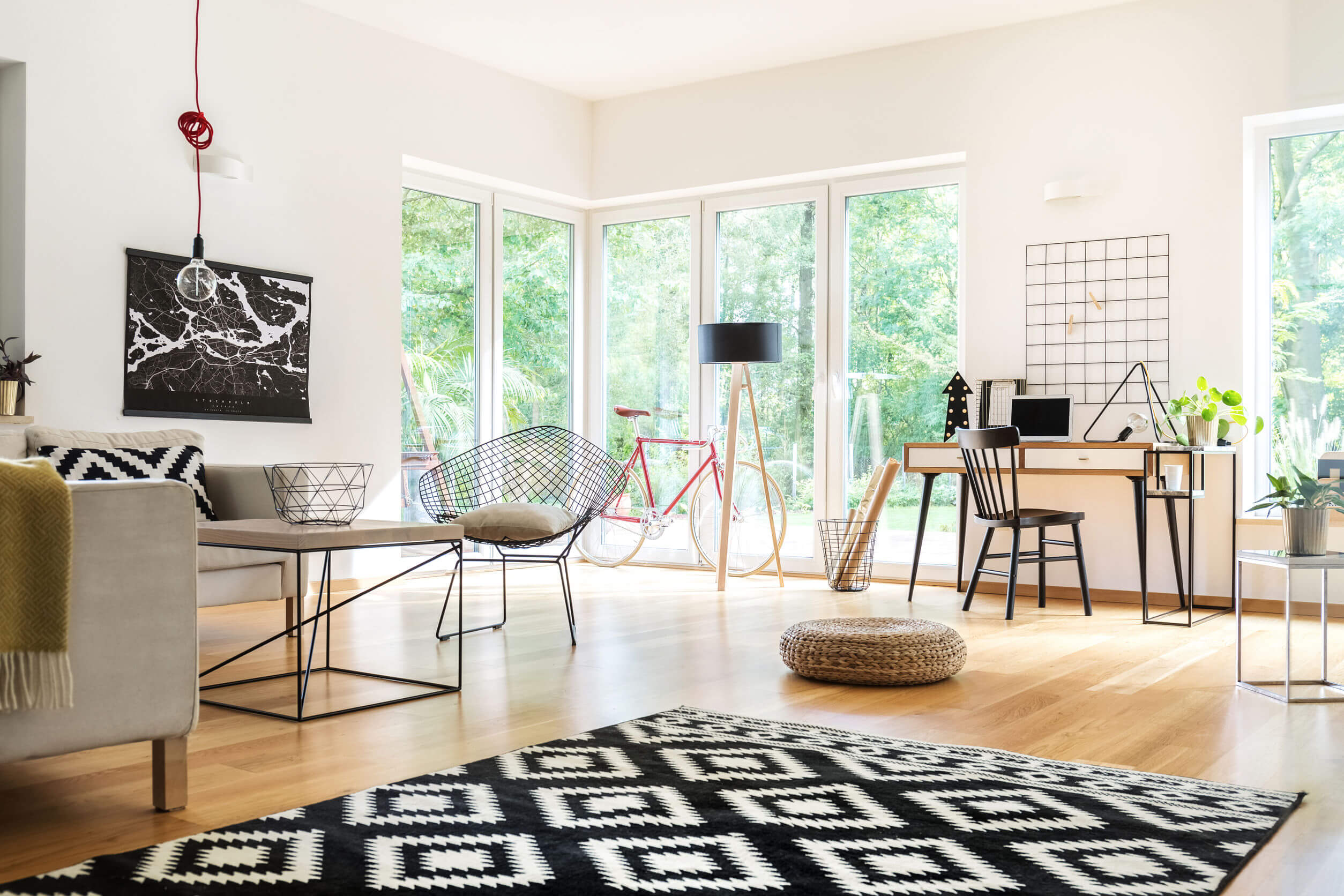
The living room is probably where an interesting, attractive, and particular interior design can best be proposed. The most important thing is that you provide personality to the whole by establishing aesthetic parameters that are well-defined.
Ideally, the furniture is directed towards a specific point. Generally, it’s the television toward which we direct the decoration, but you can also make the focus the fireplace or a large window. In other words, there must be a meeting point.
Dynamism becomes the main element. The variety of shapes and sizes can be a good formula for the room. For example, a sofa matches very well with a central coffee table (circular or square), with everything outlined by shelves and other resources that complete the walls.
The idea is to extract a result that pleases you.
The relationship between the rooms
One way that we create a decorative discourse within the house is through the link between all the rooms. Only then can we establish a tour. In other words, as we go from one place to another, we perceive the discourse that we pursue so much. Let’s look at some interesting formulas to achieve it:
- For one, you have to pay serious attention to colors. If you want to be sure that all the spaces are harmonized, you don’t need to repeat the same tones. Rather, there can be differences between them but, at the same time, an adaptation with respect to the space.
- Adult, youth, and children’s rooms don’t have to be identical. In reality, it’s best for there to be a contrast both regarding the colors and the resources used. More or less seriousness will be sought depending on the age of the tenant of the room.
- If a style is applied throughout the home, then all the rooms need to follow the specific characteristics. In this way, on a general level, everything maintains an adequate line and the parameters that govern the style itself are developed.
- Of course, you should avoid connecting different designs. If you’ve established a classic style in one area and you apply a minimalist or contemporaneous style in another, then you produce an uncomfortable tension in the final result.
What role do the kitchen and bathroom play?

These two spaces have a unique character. The designs are completely different from what can be seen in the rest of the house. This allows us to open up a range of possibilities in terms of the design that we apply.
If you use ceramics, stone, or furniture from other categories, you can obtain distinguished content. In this case, the contrast is very necessary, as it helps you to energize and change the aesthetic in a subtle way.
When it comes to incorporating materials or colors, it doesn’t matter if they stand out a little more as long as you don’t apply components that are too outlandish. Don’t stray too far from the house’s own style.
A breath of fresh air for decoration.
It’s important to follow the same path in order to create discourse
As previously stated, there’s no need to develop different styles in each room, taking into account that our desire is, fundamentally, the harmonization of the whole.
The main objective is to achieve a similar harmony between the rooms, although there are certain variants that, deep down, are appreciated and come in handy to keep from falling into monotony.
In short, to create discourse in interior design, you need to have tact, set an objective, have clear ideas, and define the content according to your tastes.
When you decorate a home, you try to establish a coherent organization and distribution. To achieve this purpose, it’s essential that you keep in mind how to create discourse in interior design.
If you take a look at each of the rooms, you’ll probably realize that the furniture, colors, and objects have common parameters in such a way that a specific meaning is obtained.
From our perspective, we try to apply a process of coherence and stability. When everything’s in harmony, we perceive full well-being. In this regard, a discourse is achieved in which all the resources are related to one another and dialogue in a sustainable way.
How to create discourse in the living room

The living room is probably where an interesting, attractive, and particular interior design can best be proposed. The most important thing is that you provide personality to the whole by establishing aesthetic parameters that are well-defined.
Ideally, the furniture is directed towards a specific point. Generally, it’s the television toward which we direct the decoration, but you can also make the focus the fireplace or a large window. In other words, there must be a meeting point.
Dynamism becomes the main element. The variety of shapes and sizes can be a good formula for the room. For example, a sofa matches very well with a central coffee table (circular or square), with everything outlined by shelves and other resources that complete the walls.
The idea is to extract a result that pleases you.
The relationship between the rooms
One way that we create a decorative discourse within the house is through the link between all the rooms. Only then can we establish a tour. In other words, as we go from one place to another, we perceive the discourse that we pursue so much. Let’s look at some interesting formulas to achieve it:
- For one, you have to pay serious attention to colors. If you want to be sure that all the spaces are harmonized, you don’t need to repeat the same tones. Rather, there can be differences between them but, at the same time, an adaptation with respect to the space.
- Adult, youth, and children’s rooms don’t have to be identical. In reality, it’s best for there to be a contrast both regarding the colors and the resources used. More or less seriousness will be sought depending on the age of the tenant of the room.
- If a style is applied throughout the home, then all the rooms need to follow the specific characteristics. In this way, on a general level, everything maintains an adequate line and the parameters that govern the style itself are developed.
- Of course, you should avoid connecting different designs. If you’ve established a classic style in one area and you apply a minimalist or contemporaneous style in another, then you produce an uncomfortable tension in the final result.
What role do the kitchen and bathroom play?

These two spaces have a unique character. The designs are completely different from what can be seen in the rest of the house. This allows us to open up a range of possibilities in terms of the design that we apply.
If you use ceramics, stone, or furniture from other categories, you can obtain distinguished content. In this case, the contrast is very necessary, as it helps you to energize and change the aesthetic in a subtle way.
When it comes to incorporating materials or colors, it doesn’t matter if they stand out a little more as long as you don’t apply components that are too outlandish. Don’t stray too far from the house’s own style.
A breath of fresh air for decoration.
It’s important to follow the same path in order to create discourse
As previously stated, there’s no need to develop different styles in each room, taking into account that our desire is, fundamentally, the harmonization of the whole.
The main objective is to achieve a similar harmony between the rooms, although there are certain variants that, deep down, are appreciated and come in handy to keep from falling into monotony.
In short, to create discourse in interior design, you need to have tact, set an objective, have clear ideas, and define the content according to your tastes.
All cited sources were thoroughly reviewed by our team to ensure their quality, reliability, currency, and validity. The bibliography of this article was considered reliable and of academic or scientific accuracy.
- De Haro Lebrija, Fernando; Fuentes, Omar: Espacios con estilo, AM Editores, 2012.
- Quan, Diana: El paraíso es tu casa, Barcelona, Penguin Random House, 2017.
